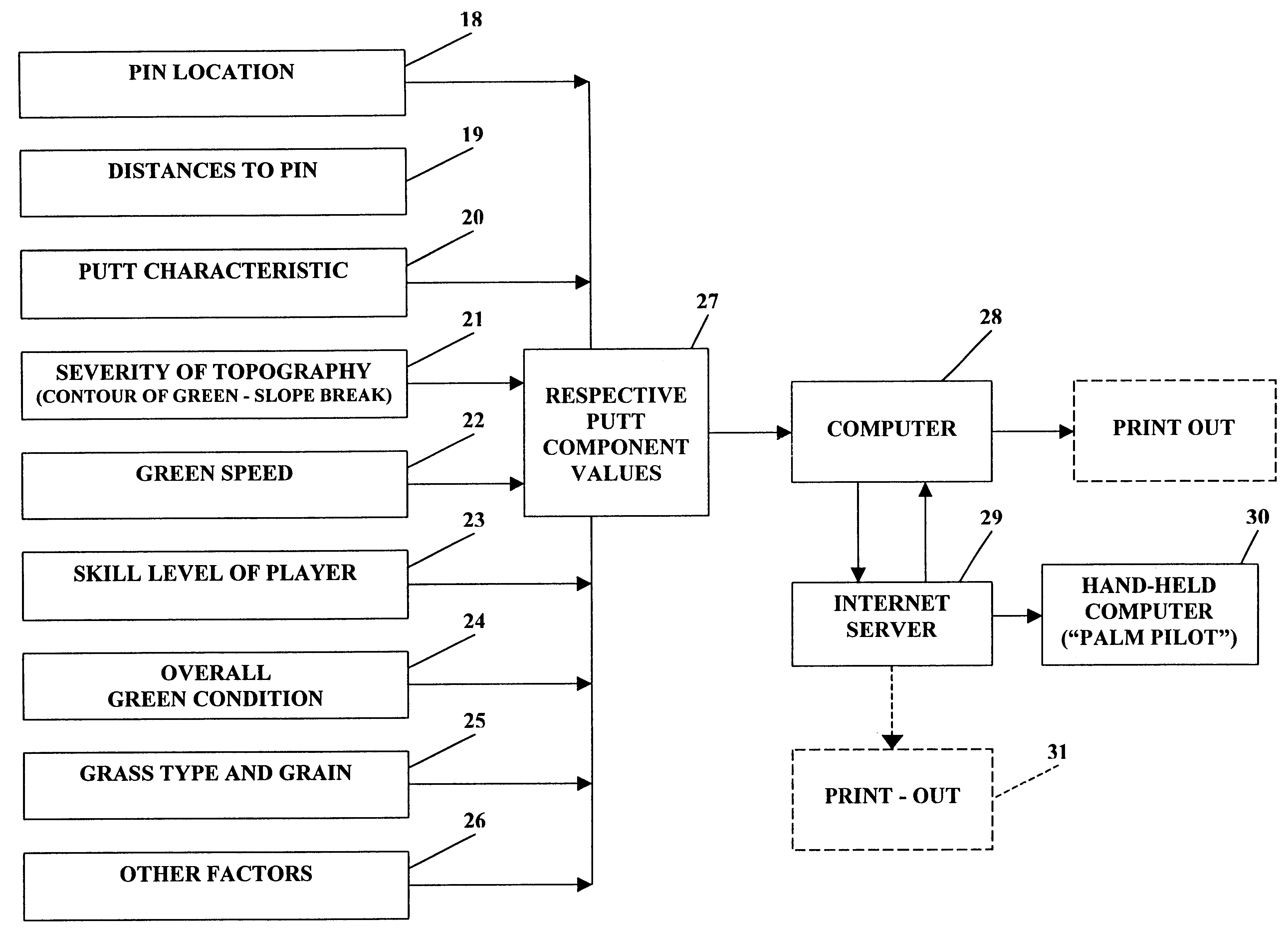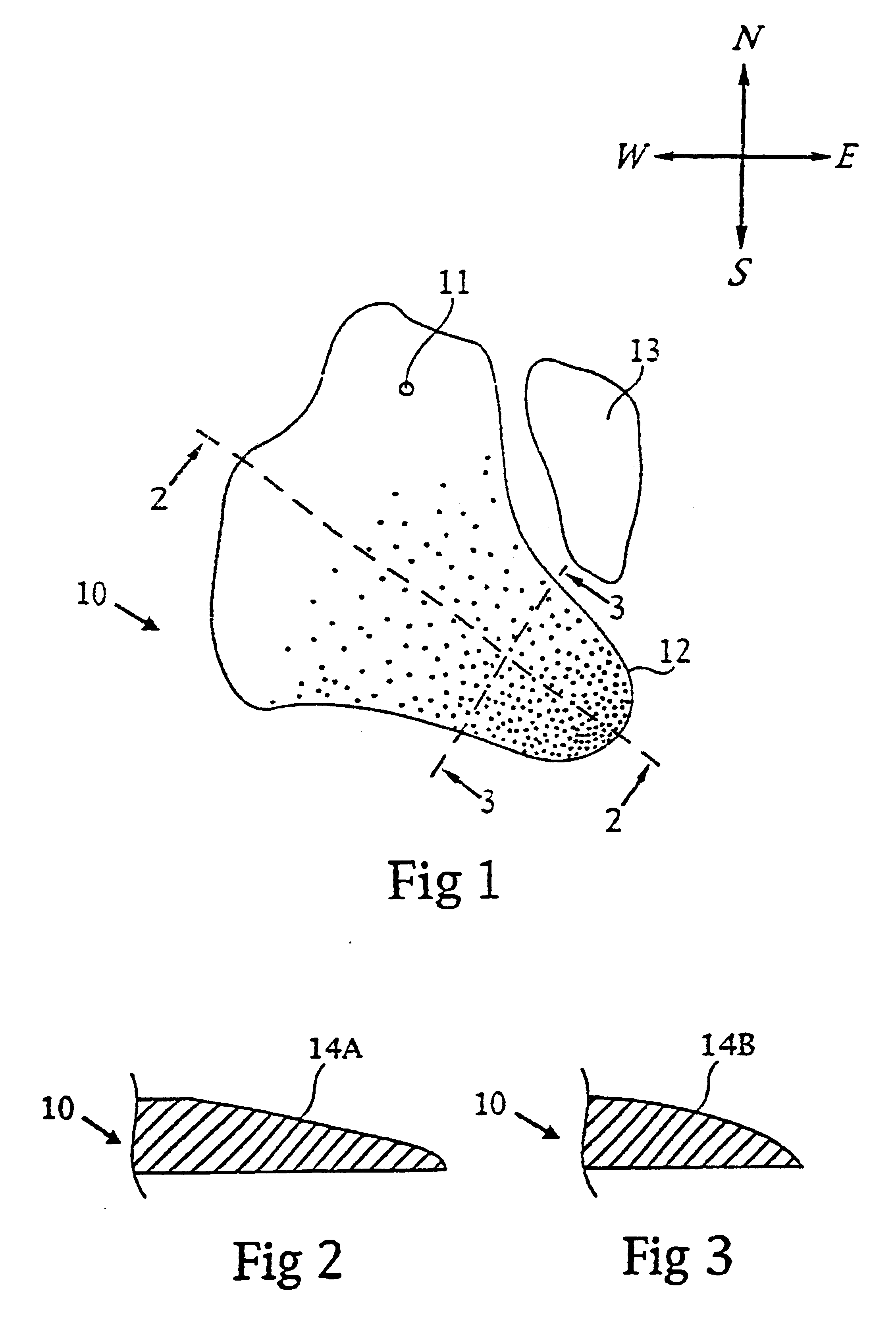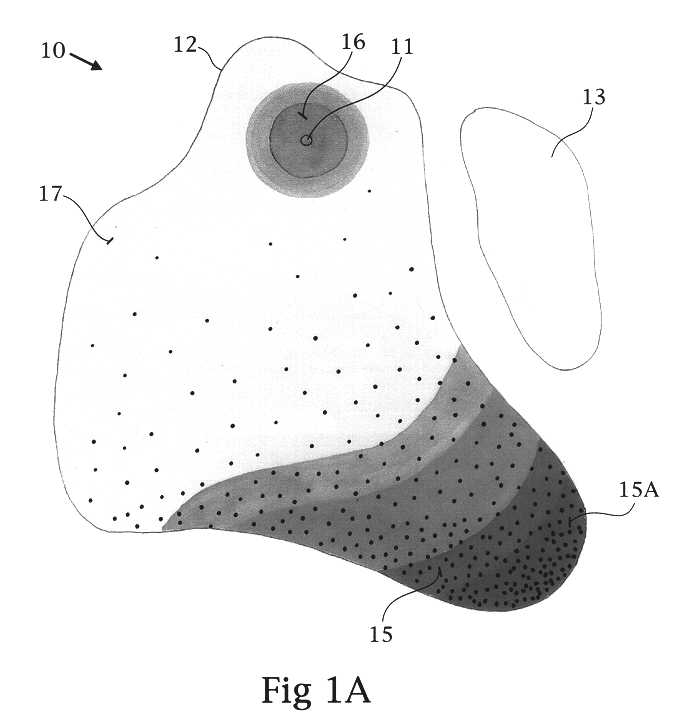Apparatus and method for improving the playing of golf
a technology for golf and equipment, applied in the field of equipment and methods for improving can solve the problems of inability to improve the playing of golf, prior art being considered "illegal", incomplete and inaccurate, and misleading,
- Summary
- Abstract
- Description
- Claims
- Application Information
AI Technical Summary
Benefits of technology
Problems solved by technology
Method used
Image
Examples
Embodiment Construction
With reference to FIGS. 1-3, a typical putting green 10 has a pin 11 defining the cup (not shown) on a typical golf course. The putting green 10 (and its proximity) are defined by a perimeter 12. Outside of the perimeter 12, is a bunker (or sand trap) 13. In the example of FIGS. 1-3, the slope of the putting green 10 consists of a downhill gradient 14a and a sidehill gradient 14b. In this particular example, downhill gradient 14a is on a NW / SE axis (as shown in FIG. 1) and the sidehill gradient 14b is on a NE / SW axis. These respective axes will rotate in accordance with changes in the pin location.
The configuration and topography of the putting green 10 is displayed graphically by stippling or contour lines or both. The graphic presentation may be a printed sheet, scorecard or else by computer monitor, such as a "Palm Pilot".
With reference to FIG. 1A and with further reference to FIGS. 4A-4D, the putting green 10 is organized by a mathematical formula into respective zones which are...
PUM
 Login to View More
Login to View More Abstract
Description
Claims
Application Information
 Login to View More
Login to View More - R&D
- Intellectual Property
- Life Sciences
- Materials
- Tech Scout
- Unparalleled Data Quality
- Higher Quality Content
- 60% Fewer Hallucinations
Browse by: Latest US Patents, China's latest patents, Technical Efficacy Thesaurus, Application Domain, Technology Topic, Popular Technical Reports.
© 2025 PatSnap. All rights reserved.Legal|Privacy policy|Modern Slavery Act Transparency Statement|Sitemap|About US| Contact US: help@patsnap.com



